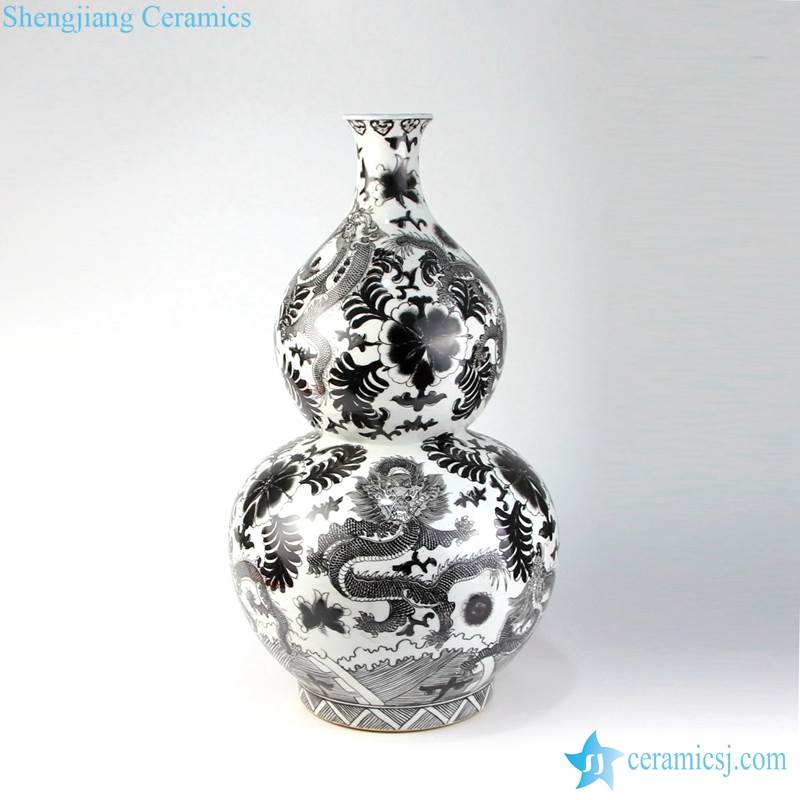
© Trustees of the British Museum
Chinese porcelain decoration: underglaze blue and red
Blue-and-white porcelain

The blue-and-white wares of the fourteenth and fifteenth centuries often took their shapes from Islamic metalwork. The globular body, tall cylindrical neck and dragon handle of this jug all imitate contemporary metalwork of Timurid Persia. The crowded decoration of this jug is a feature of early blue-and-white porcelain that continued into the early part of the Ming dynasty. It is very different to the generally more subtle character of Chinese ornament. The motifs used in decorating the jug, however, are still distinctly Chinese, notably the breaking waves on the neck and floral scroll on the body.
Overglaze enamels

© Trustees of the British Museum
New colors (including pink!)

© Trustees of the British Museum
Accordingly to Chinese tradition, butterflies are an auspicious sign. They convey a wish for longevity, and were therefore often used to decorate birthday gifts or lanterns given during the Autumn Moon Festival: on the 15th day of the 8th month of the lunar calendar (usually around September). The Festival is celebrated by lighting lanterns of different shapes, sizes and colors, and by gazing at the moon. The bowl above, made at the imperial kilns at Jingdezhen, may have been presented by the emperor to a family member or worthy subject on such an occasion.



